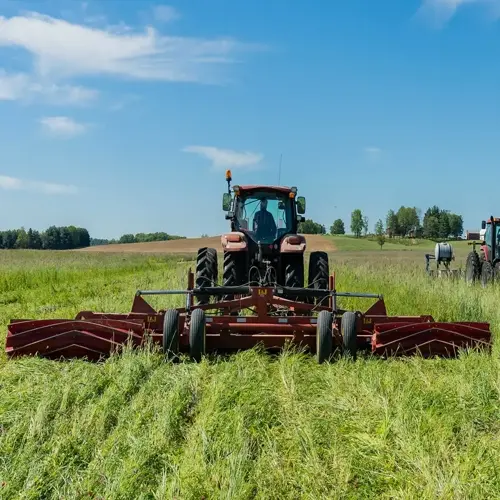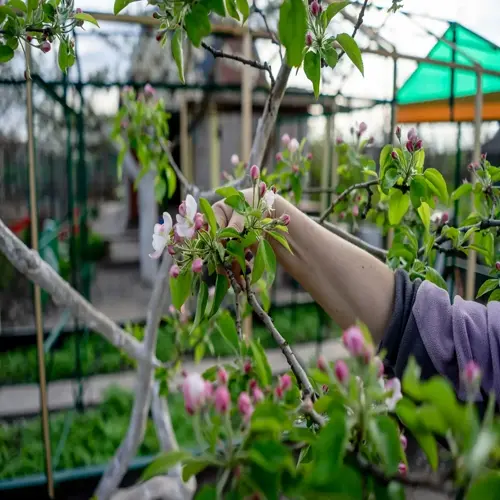Top 10 Drought Resistant Plants for Gardens

Written by
Benjamin Miller
Reviewed by
Prof. Martin Thorne, Ph.D.Drought-tolerant plants such as lavender and sedum can reduce the water usage of the yard by 50% to 70%.
Water thoroughly every 10 to 14 days to establish resilient roots during drought conditions.
Hydrozoning is a practice that groups plants in the landscape based on their water needs for efficient irrigation.
Amend the soil with 30% compost or perlite to retain moisture effectively.
Add 3 inch of gravel mulch to reduce evaporation and suppress weeds.
Include native plants in the yard, like coneflower and yarrow, to bring beauty and lower maintenance.
Article Navigation
Extended droughts and water restrictions are becoming increasingly frequent as climate change progresses. Thus, drought-resistant plants are a must in our present-day gardens. I've seen neighbors replace their thirsty grasses with hardy species and save thousands of gallons of water each year. You can save water, too, while having a bright, colorful garden.
Selecting the correct plants means less upkeep and a better chance that a garden will survive. Think how much more enjoyable your outdoor space will be when there is less time spent on watering. These hardy varieties are readily revivified after periods of dryness, rather than the antiquated varieties, which have to be constantly watered to keep them lively and blooming. You have beauty with less care.
I will show you the top ten performers that thrive well in dry conditions. Discover care techniques that enhance root health and dispel common misconceptions. You will be amazed at how a few well-thought-out changes can result in lasting water conservation for your landscape.
Top 10 Drought Resistant Plants
Thriving in zones 5 to 9 with its silver-gray foliage, which helps retain moisture, is lavender (Lavandula angustifolia). It sends its roots deep into the ground to secure moisture. Planting it alongside rosemary and sage creates a sweet-smelling, low-moisture herb garden. For buzzing bees and fluttering butterflies, it blooms in the summer months.
Sedum 'Autumn Joy' (Hylotelephium) grows in zones 3-9, having fleshy leaves which store water. This succulent plant works well with ornamental grasses. I have watched goldfinches enjoy their seed heads through the entire winter. It prevents soil erosion on slopes.
The Russian sage (Perovskia atriplicifolia) can survive in zones 4-9. This plant grows woody stems and has drought-tolerant characteristics. The pairing of Russian sage with purple coneflower produces a bold color contrast. It will also support pollinator activity for a greater portion of the flowering season, as blooms last longer when bloom windows of other flowers are shorter.
Agapanthus (zones 8-11) has tuberous roots that store moisture. Plant beneath olive trees for Mediterranean flair. Hummingbirds visit their globe flowers. My clients save 30% water using these instead of annuals.

Lavender
- Botanical Name: Lavandula spp., a fragrant perennial herb originating from Mediterranean regions known for thriving in arid conditions
- Hardiness Zones: Flourishes in USDA zones 5 to 9 where winter temperatures rarely fall below -20°F (-29°C) and summer heat exceeds 90°F (32°C)
- Sun Requirements: Requires full direct sunlight exposure for minimum six hours daily to develop essential oils that enhance drought resistance
- Water Needs: Established plants need deep watering every 14-21 days; withstands extended dry periods over 30 days without moisture stress
- Growth Habit: Forms compact aromatic bushes 1-3 ft (0.3-0.9 m) tall with purple flower spikes that bloom continuously throughout summer months
- Special Features: Silver-green foliage naturally repels deer while fragrant flowers attract bees; both flowers and leaves have culinary applications

Russian Sage
- Botanical Name: Perovskia atriplicifolia, a woody-stemmed perennial featuring silvery-gray foliage and abundant lavender-blue flower spikes
- Hardiness Zones: Adaptable across USDA zones 4 to 9, surviving extreme winter cold down to -30°F (-34°C) and summer heat above 100°F (38°C)
- Sun Requirements: Demands full sun exposure for optimal flowering performance and to maintain distinctive silver leaf coloration year-round
- Water Needs: Mature plants require deep monthly watering; survives annual rainfall as low as 12 in (30 cm) through extensive root systems
- Growth Habit: Reaches 3-5 ft (0.9-1.5 m) height with wispy flower spikes that create graceful movement even in gentle breezes
- Special Features: Fragrant leaves deter rabbits while deep taproots prevent soil erosion on slopes exceeding 30-degree angles
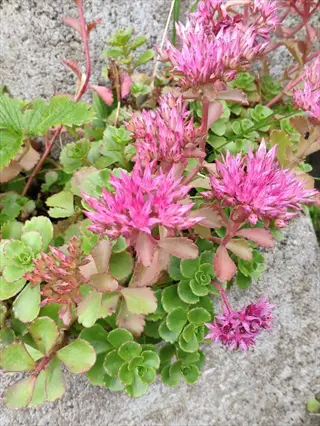
Sedum
- Botanical Name: Hylotelephium spp., succulent perennials formerly classified under Sedum with thick moisture-storing leaves and stems
- Hardiness Zones: Extremely versatile across USDA zones 3 to 11, tolerating winter lows of -40°F (-40°C) and summer highs over 90°F (32°C)
- Sun Requirements: Prefers full sun exposure but tolerates partial shade; develops vibrant foliage colors under bright light conditions
- Water Needs: Requires irrigation only during exceptional droughts exceeding 60 days; stores substantial water reserves in fleshy tissues
- Growth Habit: Varieties range from groundcover types at 2 in (5 cm) to upright forms reaching 3 ft (0.9 m) with clustered flowers
- Special Features: Star-shaped blooms attract butterflies while evergreen varieties provide winter texture in snowy climates
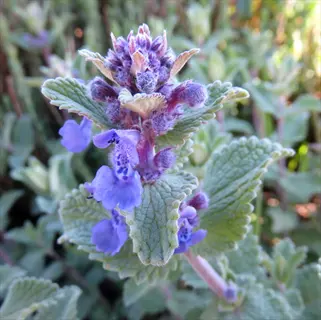
Catmint
- Botanical Name: Nepeta spp., a mint-family perennial featuring gray-green aromatic foliage and profuse violet flower spikes
- Hardiness Zones: Exceptionally cold-tolerant in USDA zones 3 to 8, surviving temperatures as low as -40°F (-40°C) with snow cover
- Sun Requirements: Performs best in full sun but accepts partial shade with moderate reduction in flowering intensity and duration
- Water Needs: Established plants need watering every 21-28 days during drought; recovers rapidly after rainfall or irrigation
- Growth Habit: Forms dense mounds 1-3 ft (0.3-0.9 m) tall with continuous blooming from late spring through autumn frost
- Special Features: Deer-resistant foliage; flowers attract bees and beneficial insects; serves as cold-hardy lavender alternative

Purple Coneflower
- Botanical Name: Echinacea purpurea, a North American prairie native with distinctive daisy-like flowers and prominent central cones
- Hardiness Zones: Thrives in USDA zones 3 to 9, adapting to temperature extremes from -40°F (-40°C) to 100°F (38°C)
- Sun Requirements: Requires full direct sunlight for sturdy stem development and maximum flower production throughout summer
- Water Needs: Mature specimens need irrigation only during droughts exceeding 28 days; deep roots access subsurface moisture
- Growth Habit: Grows 2-5 ft (0.6-1.5 m) tall with vibrant purple petals surrounding orange-brown cones that persist into winter
- Special Features: Seed heads provide critical winter food for finches; roots contain immune-boosting medicinal compounds

Yarrow
- Botanical Name: Achillea spp., featuring fern-like aromatic foliage and flat-topped flower clusters in various colors
- Hardiness Zones: Remarkably adaptable across USDA zones 3 to 11, enduring temperatures from -40°F (-40°C) to 115°F (46°C)
- Sun Requirements: Demands full sun exposure to maintain upright growth and prevent stem flopping during heavy flowering
- Water Needs: Deep irrigation every 21 days suffices during drought; thrives in poor soils with minimal nutrient content
- Growth Habit: Forms dense clumps 1-3 ft (0.3-0.9 m) tall with flower heads appearing in yellow, pink, white or red shades
- Special Features: Foliage naturally repels deer while flowers attract predatory insects like ladybugs for pest control

Lantana
- Botanical Name: Lantana camara, a tropical flowering shrub producing multi-colored clusters that change hue as they mature
- Hardiness Zones: Perennial in USDA zones 9-11; grown as annual elsewhere where temperatures drop below 20°F (-7°C)
- Sun Requirements: Requires full direct sunlight for continuous blooming and to maintain compact dense growth habit
- Water Needs: Weekly watering needed during establishment; mature plants withstand 14-21 day dry periods in hot conditions
- Growth Habit: Reaches 3-6 ft (0.9-1.8 m) in warm climates with flower clusters containing multiple color variations simultaneously
- Special Features: Continuous blooms attract butterflies; salt-spray tolerance makes it ideal for coastal gardens
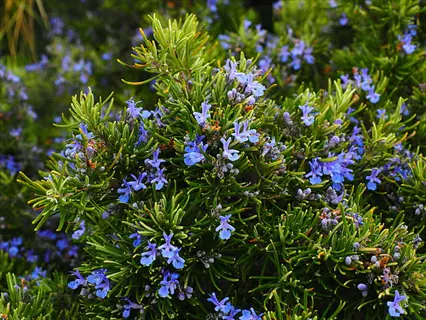
Rosemary
- Botanical Name: Salvia rosmarinus, an evergreen culinary herb with needle-like aromatic leaves and small blue flowers
- Hardiness Zones: Perennial in USDA zones 7-10; container cultivation recommended where temperatures fall below 10°F (-12°C)
- Sun Requirements: Needs full direct sunlight minimum six hours daily for optimal essential oil production and growth
- Water Needs: Deep irrigation every 21-28 days suffices; established specimens endure dry spells exceeding 30 days
- Growth Habit: Develops woody bushes 2-6 ft (0.6-1.8 m) tall with blue flowers appearing in mild winter climates
- Special Features: Culinary leaves for seasoning; fragrant oils deter pests; excellent for drought-tolerant edible landscapes
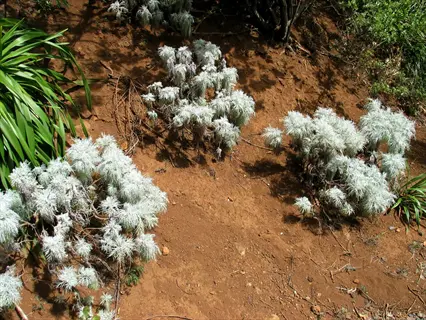
Artemisia
- Botanical Name: Artemisia spp., comprising silvery-foliaged perennials and shrubs with finely dissected aromatic leaves
- Hardiness Zones: Adaptable across USDA zones 3 to 10, tolerating winter lows of -40°F (-40°C) and summer highs over 100°F (38°C)
- Sun Requirements: Requires full direct sunlight for best silver foliage coloration and compact growth structure
- Water Needs: Monthly deep watering during drought; fuzzy leaves minimize moisture loss through specialized leaf structures
- Growth Habit: Forms mounds 1-5 ft (0.3-1.5 m) tall with feathery silver-gray foliage providing textural contrast
- Special Features: Foliage oils repel insects; excellent light-reflecting companion for dark-flowered plants; deer-resistant
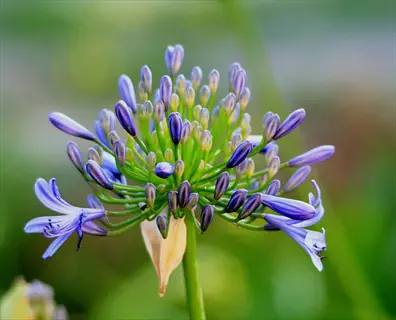
Agapanthus
- Botanical Name: Agapanthus spp., South African natives producing spherical clusters of trumpet-shaped flowers on tall stems
- Hardiness Zones: Thrives in USDA zones 7-10 where winter temperatures remain above 10°F (-12°C) for root survival
- Sun Requirements: Needs full direct sunlight for maximum flowering; accepts light afternoon shade in hottest climates
- Water Needs: Water deeply every 14 days during active growth; dormant plants require minimal winter moisture
- Growth Habit: Forms clumps 1-4 ft (0.3-1.2 m) tall with strap-like leaves and globe-shaped blue or white blooms
- Special Features: Long-lasting cut flowers; evergreen foliage in mild climates; excellent container performance with minimal watering
Watering Strategies for Drought Gardens
Deep root growth is essential in developing a drought-resistant garden. Water the plants slowly and infrequently, soaking the soil down to a depth of 12-18 inches every 10-14 days. This way, roots will follow the moisture down to where it lasts. My clients' gardens have thrived with this system.
Choose your irrigation wisely. Drip systems send water to the roots with 90 percent efficiency, compared to the wasteful 65 percent efficiency of sprinklers. I installed drip lines under mulch to prevent evaporation. For potted plants, use clay ollas which emit water gradually.
Irrigate between 4-8 AM only when air temperatures are below 70°F. Morning irrigation will result in 50% less evaporation potential than midday timing. Evening irrigation can lead to the development of fungal diseases. Use timers to irrigate during cooler times in the day (i.e., local times for cool hours).
Place 50-gallon rain barrels under each downspout to collect free water. This water should be used first for new plantings to help get them established. Every inlet should be screened to prevent debris from entering, and mosquito dunks should be thrown in to prevent it from becoming a breeding ground for pests. Check with your local government to determine the regulations first.
Deep Root Watering
- Method: Water slowly and deeply to moisten soil 12-18 in (30-46 cm) down
- Frequency: Apply every 10-14 days during drought instead of frequent light watering
- Benefit: Encourages roots to grow downward where soil stays moist longer
- Tool: Use soaker hoses or drip irrigation for precise deep penetration
Irrigation Efficiency
- Drip Systems: Deliver water directly to roots with 90% efficiency versus sprinklers' 65%
- Timers: Program to run 2-4 AM when evaporation rates are lowest
- Maintenance: Check monthly for leaks; clean filters to maintain optimal flow
- Alternative: Ollas (clay pots) buried near plants provide slow subsurface release
Timing Optimization
- Best Window: Water between 4-8 AM when temperatures are below 70°F (21°C)
- Avoid: Midday watering loses 50% to evaporation; evening promotes fungal diseases
- Adjustment: Extend intervals during cool periods; shorten during extreme heat waves
- Indicator: Watch for slight leaf wilt as sign to water, not complete drooping
Rainwater Harvesting
- Collection: Install 50-100 gal (190-380 L) barrels under downspouts
- Usage: Prioritize for new plantings during first 8-week establishment period
- Treatment: Use mosquito dunks in stored water; screen inlets to prevent debris
- Regulations: Check local laws; some areas offer rain barrel subsidies
Soil Moisture Management
- Mulching: Apply 3-inch depth (7.6 cm) organic layer to reduce evaporation by 70%
- Monitoring: Use soil probes to check moisture at root depth before watering
- Amendment: Mix water-absorbing polymers into soil for container gardens
- Drought Response: Prioritize water to high-value plants during restrictions
Soil Preparation Essentials
Organic amendments, such as compost, can retain three times their weight in water, making them particularly beneficial for sandy soils. Inorganic additives, such as perlite, promote drainage in heavy clay. I am a fan of mixing compost into my vegetable beds and perlite for succulent plantings. Select the option that best suits your existing soil texture.
You can easily test your soil's drainage using a simple hole test. Dig a hole twelve inches deep, fill it with water, and see how long it takes the water to drain. Ideal drainage time is between four and twelve hours. If you have clay-type soils, you can improve them by adding coarse sand and compost. Sandy soils will require at least some peat moss to assist in moisture retention.
Vary the depths for different plants. Deep-rooted tomatoes or bushes, till 18 inches deep. Shallow-rooting herbs or flowers, till the soil to a depth of 8 inches. I mark my shovel with depth tape, which prevents any guesswork. The proper depth prevents the "bathtub effect."
With the squeeze test, you will determine a balance of sand and clay. Moisten the soil. Take a handful and squeeze it in your hand. Good loam will hold its shape if released, but crumble when poked with a finger. Gradually change these proportions, retesting after each change. Your plants will repay you with increased growth.
Testing & Analysis
- Texture Test: Squeeze moist soil - sandy crumbles, clay forms ball, loam holds shape but breaks
- Drainage Check: Dig 12 in (30 cm) hole, fill with water; drains in 4-12 hours = ideal
- pH Testing: Use kit; most drought plants prefer 6.0-7.5 pH range
- Nutrient Scan: Check nitrogen (N), phosphorus (P), potassium (K) levels
Amending Process
- Depth: Till amendments 12-18 in (30-46 cm) deep for deep-rooted plants
- Ratio: Mix 3 parts native soil to 1 part amendment for balanced structure
- Timing: Prepare beds 4 weeks before planting to allow settling
- Avoid: Don't amend planting holes only - creates 'bathtub effect'
Drainage Solutions
- Sloped Beds: Create 2-3% slope away from structures for runoff
- French Drains: Install perforated pipes in gravel-filled trenches for waterlogged areas
- Raised Beds: Build 12 in (30 cm) high beds with drainage layers
- Gravel Base: Add 4 in (10 cm) gravel under heavy clay soils
Water Retention
- Organic Mulch: Apply 3-inch depth (7.6 cm) bark chips to reduce evaporation
- Hydrogels: Incorporate water-storing crystals for container gardens
- Terraces: Create level planting areas on slopes to capture rainwater
- Swales: Dig shallow ditches to redirect and retain runoff water
Planting Preparation
- Depth Guide: Dig holes 2x wider but same depth as root ball
- Root Soak: Submerge root balls 15 minutes before planting
- Backfill: Use native soil only; don't create 'rich pocket'
- Watering: Deep soak after planting; then water sparingly
Landscaping Design Tips
For the utmost efficiency, categorize plants according to their moisture demands in what is termed hydrozoning. Pair moisture-loving agapanthus with downspout drainage, place lavender on slopes where moderate moisture is present, and rely on sedum varieties in dry areas. I transformed a client's yard by establishing separate irrigation sections, which allowed for different water uses and resulted in irrigation cuts of one-half.
Choose hardscape with care. Gravel paths that permit water to penetrate absorb water at the rate of 12 inches an hour, while concrete causes run off. Rock gardens of boulders and succulents require no watering at all. I use dry stream beds to catch the rain and direct it elsewhere, while adding an interesting element.
Form a vibrant contrast using texture combinations. Darts of spiky blue yucca stick out against the mounds of fluffy green santolina. Nevertheless, bright silver artemisia forms a beautiful contrast with the dark green, sharply cut foliage of junipers. In my own garden, purple salvias, adjacent to bright golden coreopsis, serve as beacons for butterflies, requiring minimal care.
Replace lawns with focal points such as flagstone patios under trees. Add a decorative rain chain to flow into a barrel. I design small oasis zones near seating areas using container plants, reducing high-water turf by 60% in most landscapes.
Hydrozoning Strategy
- High-Water Zone: Place near downspouts; group moisture-loving plants like agapanthus
- Moderate Zone: Mid-slope areas with plants like lavender needing biweekly water
- Low-Water Zone: Upper slopes/edges with succulents like sedum needing minimal irrigation
- Oasis Zone: Small high-impact areas near seating with container plants
Hardscape Integration
- Permeable Paths: Use gravel or decomposed granite allowing 12 in/h (30 cm/h) drainage
- Rock Gardens: Arrange boulders with drought plants in crevices for natural look
- Dry Stream Beds: Create decorative gravel channels that manage runoff during storms
- Patio Spaces: Replace 50% lawn with flagstone seating areas under shade trees
Texture & Color Layering
- Silver Foliage: Place artemisia against dark evergreens like juniper for contrast
- Spiky Forms: Use yucca or agave beside mounding plants like santolina
- Seasonal Color: Plant drifts of blanket flower for summer and ornamental grasses for winter
- Height Variation: Layer from groundcovers (thyme) to shrubs (butterfly bush)
Water-Saving Features
- Rain Chains: Replace downspouts with decorative chains directing water to barrels
- Swales: Create shallow ditches planted with rushes to capture roof runoff
- Mulch Choices: Use 3-inch depth (7.6 cm) gravel mulch around succulents; bark for perennials
- Terraces: Build retaining walls on slopes to create flat planting zones
Wildlife Integration
- Pollinator Zones: Cluster coneflowers and salvia near vegetable gardens
- Bird Habitat: Include berry-producing shrubs like pyracantha in low-water zones
- Insect Hotels: Place near artemisia to attract beneficial predators
- Water Sources: Add small gravel-lined birdbaths with drip irrigation overflow
Low-Maintenance Care Guide
Prioritize critical seasonal tasks. Apply 3-inch mulch in spring before summer heat. Deadhead spent blooms monthly in summer. Divide crowded perennials every three years in fall. Protect tender plants with burlap when winter frosts threaten. This approach saves several hours a month.
Use minimal pruning for drought-resistant plants. Remove only the dead wood from shrubs, such as Russian sage. Never cut the succulent, fleshy leaves. In early spring, cut ornamental grasses to a height of 6 inches. Use the chop and drop cuttings as natural mulch for perennials.
Use nonchemical means for weed suppression. Keep gravel mulch barriers around plants. In areas between specimens, plant creeping thyme, which crowds out invaders. Pour boiling water on weeds appearing in cracks in pavements. Use a hula hoe for quick surface weeding, done without bending over.
Encourage self-sowing plants such as verbascum and poppies. Allowing late-season flowering plants to produce their seeds. Each spring, thin the seedlings; transplant any extras. Disperse seeds amongst gravel paths so they will readily self-colonize. This way, ever-changing beauty can continue with no effort at plant propagation.
Seasonal Maintenance Schedule
- Spring: Apply 3-inch depth (7.6 cm) mulch layer; plant new additions before summer heat arrives
- Summer: Deadhead spent blooms monthly; water established plants only during extreme drought conditions
- Fall: Cut back perennials after first frost; divide overcrowded clumps every three years for rejuvenation
- Winter: Protect tender plants with burlap wraps; avoid walking on frozen garden soil to prevent compaction
Pruning Techniques
- Minimal Approach: Remove only dead or damaged wood; avoid excessive shaping cuts that stimulate growth
- Succulents: Never prune fleshy leaves; remove spent flower stalks after blooming to maintain appearance
- Grasses: Cut back to 6 in (15 cm) height in early spring before new green growth emerges from base
- Perennials: Use 'chop and drop' method leaving cuttings around plants as natural nutrient-rich mulch
Weed Management
- Prevention: Maintain 3-inch depth (7.6 cm) gravel mulch barrier around plants to block weed germination
- Natural Suppression: Plant dense groundcovers like creeping thyme between specimens to crowd out weeds
- Spot Treatment: Pour boiling water directly on weeds growing in pavement cracks for chemical-free removal
- Tool Choice: Use hula hoe for quick surface weeding without bending down to preserve your back
Self-Seeding Strategies
- Top Performers: Allow verbascum, poppies, and coneflowers to drop seeds naturally for next year's growth
- Management: Thin overcrowded seedlings in early spring; transplant extras to fill bare garden areas
- Timing: Avoid deadheading late-season blooms to permit full seed maturation before winter dormancy
- Naturalization: Scatter collected seeds along gravel pathways for informal colonization in low-traffic zones
Drought Response
- Priority Watering: Focus limited water resources on newly planted specimens rather than established ones
- Stress Indicators: Allow slight wilting before watering to build plant resilience during dry periods
- Emergency Care: Apply diluted seaweed extract to reduce transplant shock and improve root recovery
- Container Rescue: Move potted plants to afternoon shade during extreme heat waves above 95°F (35°C)
5 Common Myths
Many in the gardening world mistakenly believe that the drought-tolerant plants do not need watering at all after they are established.
Though established drought resistant plants need very little irrigation, they still need deep waterings from time to time during periods of extended drought exceeding thirty days. Most of the species will need supplementary moisture in the extreme hot weather over 95° F. (35 C.) to escape the irreparable damage of stress that occurs. Even the native desert plants like agave get very strong benefits from quarterly deep watering imitating the rare rains of the desert.
There is a common misunderstanding that all plants adapted to dry conditions must be succulents or cacti with fleshy leaves.
Drought resistance spans multiple botanical families beyond succulents, including Mediterranean herbs like lavender with fragrant oils that reduce moisture loss. Deep-rooted prairie plants such as coneflowers access subsurface water, while silver-leafed species like artemisia reflect sunlight. Ornamental grasses like blue fescue have specialized root systems that thrive in arid conditions without fleshy water storage.
A common misbelief is that gardens planned for minimal water usage are always bare and unattractive all year around.
Water-wise gardens are colorfully patterned with contrasting colors such as purple salvia with gold coreopsis and with differing textures such as spiky yuccas and mounding santolina. Blooming sequencs are provided for interest all year around in the poppies blooming in spring followed by blanket flowers in summer and ornamental grasses in autumn a la the natives. Grouping of plants gives maximum lushness to the picture and attractive decorative gravel paths and boulders can be used for variety without adding to the water demands.
Some gardeners mistakenly think that drought-resistant species cannot survive in places with freezing winter temperatures.
Many drought-tolerant species do withstand freezing, including sedums hardy to USDA zone 3 (-40F/-40C) and Russian sage that survives zone 4 winters. Alpine plants such as creeping thyme thrive in rocky, well-drained soils found in cold regions. Cold-climate gardeners choose varieties such as ice plant (Delosperma) which store moisture in its leaves while living under snow cover.
There is a common fear that all drought-adapted plants will happily spread everywhere and become an invasive nuisance in gardens.
Although certain species, such as butterfly bush, can be invasive in certain areas, most of the recommended plants, such as rosemary and lavender, remain well-behaved. Gardeners should check local invasive species lists before using them and select sterile cultivars. Also, proper spacing allows for the aggressive spread of some species, and the non-native plants found in nurseries (e.g., agapanthus) remain safely confined to the planting areas without adopting the rhizomatous growth habits of many native plant species.
Conclusion
Water conservation isn't confined to your garden; by jointly reducing demands on reservoirs, the community will benefit during droughts. Every single drought-resistant plant you plant increases the security of the water supply for the region. This will contribute to the climate resilience necessary to cope with the uncertain weather all of us are experiencing today. By cooperation, my town has decreased summer restrictions by forty percent.
Native flora provides effortless beauty through the seasons. The silvery leaves of the artemisia and the purple coneflower make brilliant displays. The native plants are adapted to local conditions and outshine the foreign plants during the hot weather. I have watched some of the gardens around here flourish into beautiful sights while the neighbors were fighting a hard battle with the high-maintenance plants.
Begin this weekend on a smaller scale. Simply change out one high-water plant for a native like sedum, or lavender. See how much water you save in a month and share your success online. One little sustainable step sends ripples of positive change.
External Sources
Frequently Asked Questions
What are the top drought-resistant plants for gardens?
The most reliable drought-resistant plants include lavender, sedum, Russian sage, purple coneflower, and agapanthus. These species feature deep roots, water-storing leaves, or silvery foliage that minimizes moisture loss. They thrive with minimal watering once established.
How often should drought-resistant plants be watered?
Established drought-resistant plants need deep watering every 10-21 days during dry periods. The exact frequency depends on species and climate, but always water thoroughly to encourage deep root growth. Avoid frequent light watering that promotes shallow roots.
What's the difference between drought-tolerant and drought-resistant plants?
Drought-resistant plants have natural adaptations like succulent leaves or deep roots that help them thrive in dry conditions. Drought-tolerant plants survive dry spells but may show stress. True drought-resistant species often perform better in prolonged arid conditions.
Do drought-resistant plants need special soil preparation?
Optimal soil preparation includes:
- Amending with compost for water retention
- Adding perlite for drainage in clay soils
- Creating 12-18 inch depth for root development
- Applying gravel mulch to reduce evaporation
Can drought-resistant plants survive freezing temperatures?
Many species like sedum, Russian sage, and yarrow survive freezing temperatures down to -40°F when properly established. Their hardiness comes from deep root systems and protective foliage. Always check USDA zones when selecting plants for cold climates.
What are the best low-maintenance drought-resistant plants?
Top low-maintenance options include:
- Sedum - requires no pruning
- Lavender - naturally repels pests
- Catmint - blooms repeatedly without deadheading
- Ornamental grasses - need only annual trimming
How do you design a water-efficient garden?
Effective drought garden design involves hydrozoning - grouping plants by water needs. Place high-water plants near downspouts, moderate-water species on slopes, and drought-resistant varieties in dry areas. Incorporate gravel paths and rock gardens to minimize irrigated space.
Do lavender plants need full sun and special care?
Lavender thrives in full sun with minimal care once established. It requires well-drained soil and benefits from:
- Deep watering every 2-3 weeks
- No fertilizer application
- Annual light pruning after flowering
- Gravel mulch to prevent root rot
What ground covers work best in dry conditions?
Excellent drought-tolerant ground covers include creeping thyme, sedum varieties, and ice plant. These spread to form dense mats that suppress weeds while requiring minimal water. They're ideal for replacing thirsty lawns in arid regions.
How can I make potted plants more drought-resistant?
Improve container drought resilience by:
- Using terra cotta pots that breathe
- Mixing water-storing crystals into soil
- Choosing heat-tolerant species like lantana
- Applying gravel mulch on soil surface
- Moving pots to afternoon shade during heat waves
